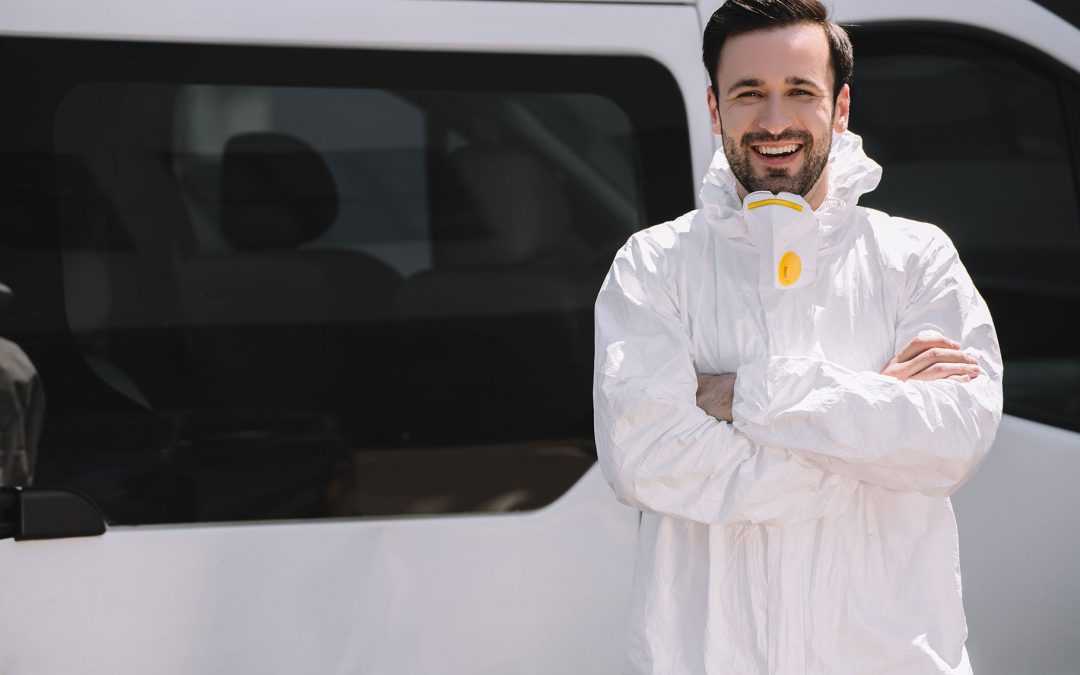Commercial pest control is a key aspect for integrated facility maintenance and requires constant up-keep.
Learn which tips are the most important to implement so that pest infestations are kept at bay in your facility.
Commercial Pest Control – Important Now, As Always
Commercial pest control is an important aspect of health and safety for any integrated facility management plan. No one wants to have their business interrupted by pesky critters wreaking havoc. A pest infestation represents a serious problem on many levels: it can impact the public perception and reputation of your service or brand, can put employee health at risk and can set you back in terms of production loss or equipment malfunction.
The world has just started to unravel from the turmoil that the pandemic caused in terms of production setbacks, closures, and business disruptions. While many facilities have placed COVID-19 cleaning as their priority, they’ve neglected other aspects of their facilities management. For many businesses, the pandemic interruptions led to the neglect of their facilities – and with spring upon us, this can lead to serious pest infestations. As such, it’s important to take a moment to decipher the most effective pest control solutions for your facility or business space.
Everyone is Playing Catch Up, and Here’s Why
The pandemic has played a huge role in the increased need for commercial pest control over the last few years. Some businesses and their operations are still recuperating from the shift the pandemic caused in terms of reduced labor and supply shortages. Regardless of the aftermath, we’re all still playing catch up. One thing many facility managers are unfortunately catching up to is a rise in commercial pests in facility spaces. Why does pest management suddenly seem like a bigger and more pressing problem than before?
Commercial Pest Control Needs are On the Rise Post-Pandemic
How did it get so bad? When business establishments temporarily closed in 2020, it created an optimal situation for pests such as rodents and insects to flourish. The pests that usually hid from humans or were kept at bay by frequent cleaning now suddenly had unlimited quiet, dark space and a surplus of left-behind materials to build their nests and set up camp. When people were instructed to quarantine and work from home, many left in a hurry, with food left behind in open and tight spaces such as lockers. Even wrapped and sealed food items can quickly attract pests. These critters have a sense of smell that is specialized and is far more advanced compared to human senses.
Sanitary maintenance experts cited an increase in rodent activity since the start of the pandemic. Similarly, termites, bed bugs and birds will also pose a bigger problem than usual to commercial and warehouse spaces.
Rodents: Vacant spaces, left behind materials, supply of food (food waste, garbage) and reduced human presence allowed many rodent species to remain cozy in empty buildings.
Insects: Experts predict that termite (often called ‘silent destroyer’) and bed bug issues will rise post-pandemic. Termites are tricky because they are not easily detected, can have multiple colonies in one area, and require a professional industrial cleaning service to really nip the problem in the bud. Bed bugs rely on moving from place to place and from host to host. Once travel and movement of employees returns to normal, we can expect a rise of these, and many more insect species.
Birds: Many bird species also welcomed spaces that were devoid of human activity once the pandemic hit. Pigeons, sparrows and sperlings that have found shelter and nested in commercial buildings may be more numerous and widespread than before.
Wildlife/Mammals: This one may come as the biggest surprise, but larger wildlife such as squirrels, raccoons and cats have also come to inhabit office spaces and facilities. It’s important to learn how to deal with these critters to prevent larger infestations.
How Spring Will Make Pest Infestations Even Worse
Spring is here. While warmer temperatures come as a relief to many of us, they are also an ideal time for pests to emerge and mate. Many pests remain in a hibernation-like state during the winter months and awake in search of food, water, and shelter once the weather warms up. This can pose a serious problem for facilities management and health and safety protocols. With the spring season, some of the most common pests to look out for include ants, mosquitoes, cockroaches, spiders, and fruit flies.
Pests Can Risk Production and Uptime
Have you considered the impact that a pest infestation could have on your business’ productivity? Aside from being a nuisance, pests can cause significant damage to certain products and can lead to periods of downtime for thorough cleaning and extermination. For instance, in aerospace and defense industries there is an entire customer and services provider program regarding Foreign Object Damage. Foreign objects are any objects or particles (or pests!) that end up where they should not be. This is an extremely important safety and quality control concern in any aviation, manufacturing, or aerospace environment where small and loose particles can have the potential to cause damage to equipment, injury to employees or production delays.
How to Make Commercial Pest Control a Priority in your Facility
With companies still navigating the ongoing pandemic, it’s probable that a full-on return to a full capacity workforce may still take some time. Until companies recruit new workers to fill roles, they will be forced to work at reduced capacity, meaning less routine cleaning. So how do you approach commercial pest control given reduced workers and the possibility of some spots not receiving the deep cleaning they need to ward off pests?
Follow these simple tips from the experts at TEAM Group.
There are two important steps in pest control: deterrence and aftermath. Deterrence involves interior and exterior preventative services such as installing mesh and traps while aftermath action involves clean-up and the catch and release or extermination of existing pests.
Given what we’ve learned about the conditions that most common pests enjoy, let’s explore what tools can be employed to improve the outcomes of your commercial pest control.
Keep Inspections Regular: When you regularly monitor for emerging pest issues, you prevent an infestation from getting out of hand. Employees and managers should both be trained on identification aspects of pests including nests, markings (bites, scratches), and droppings. Inspections should include not only on-site aspects but also those that are incoming, such as shipments and packages.
Block Access to Shelter: We learned earlier that many pests easily found shelter when humans fled. Pay attention to damp and dark areas – a favourite for cockroaches and rodents. In terms of building structures, address areas such as entrances (close gaps in doors, windows, walls), roofs, vegetation (trim shrubs, trees or hanging vegetation so it does not reach the building), drains and sewers – if these are damaged or left without screens, you may welcome unwanted intruders like rats that swim through pipes.
Eliminate Access to Food: Encourage staff to keep their work areas – such as lunchrooms, lockers etc. – clean and tidy. The kitchen is a hot spot for germs, with people going in and out and an abundance of high-touch surfaces like handles and faucets. Coupled with regular disinfection, these good habits will pay off and contribute to enhancing your commercial pest control efforts.
Deter and Use Decoys: Using decoys is a common method for deterring birds but remember to switch them up often. Discourage staff from feeding birds on the premises and remove trash regularly. Installing plastic curtains will prevent birds from flying in and getting trapped inside loading areas or warehouses.
Partner with TEAM Group: Have you ever considered working with a full facilities management provider like TEAM Group? We’ll integrate the management of people, place, process, and technology to optimize your facility to function at utmost efficiency. The experts at TEAM Group understand integrated facility management needs, including commercial pest control. Our expert technicians will get to the source of the infestation and identify how best to treat, remediate, and prevent future outbreaks.






